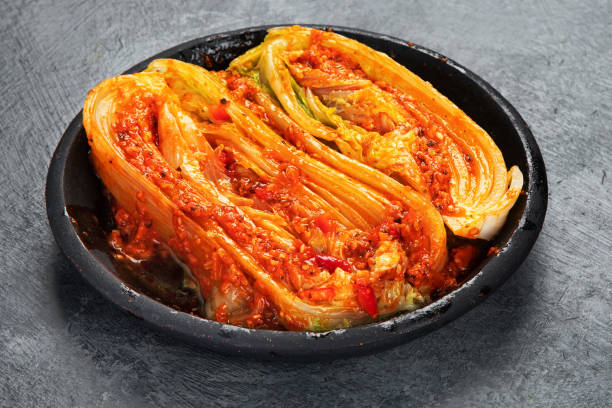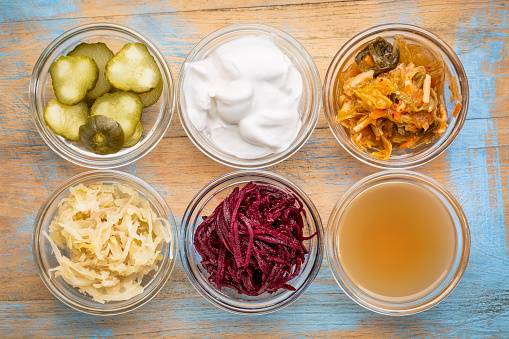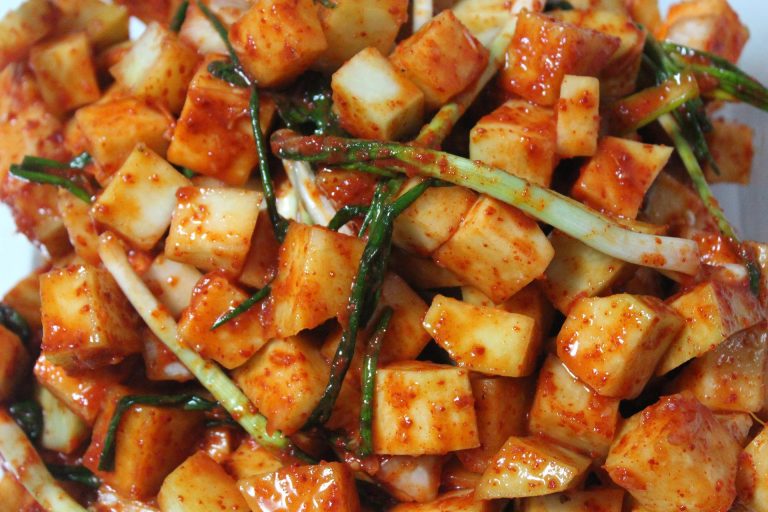What Happens When You Ferment Vegetables?
Food preparation and preservation can be done through the use of Fermentation. Fermentation is exploding in popularity for a wide range of people from chefs to foodies.
Vegetables have a unique, salty flavor and can be cultivated with healthy bacteria for our bodies.
Do you know what happens when you ferment vegetables?
The most common fermented vegetable is called kimchi. It’s a great way to preserve vegetables and get rid of leftovers.
You can also ferment cucumbers, carrots, and cabbage, just to name a few.
Here you will find everything you need to know.
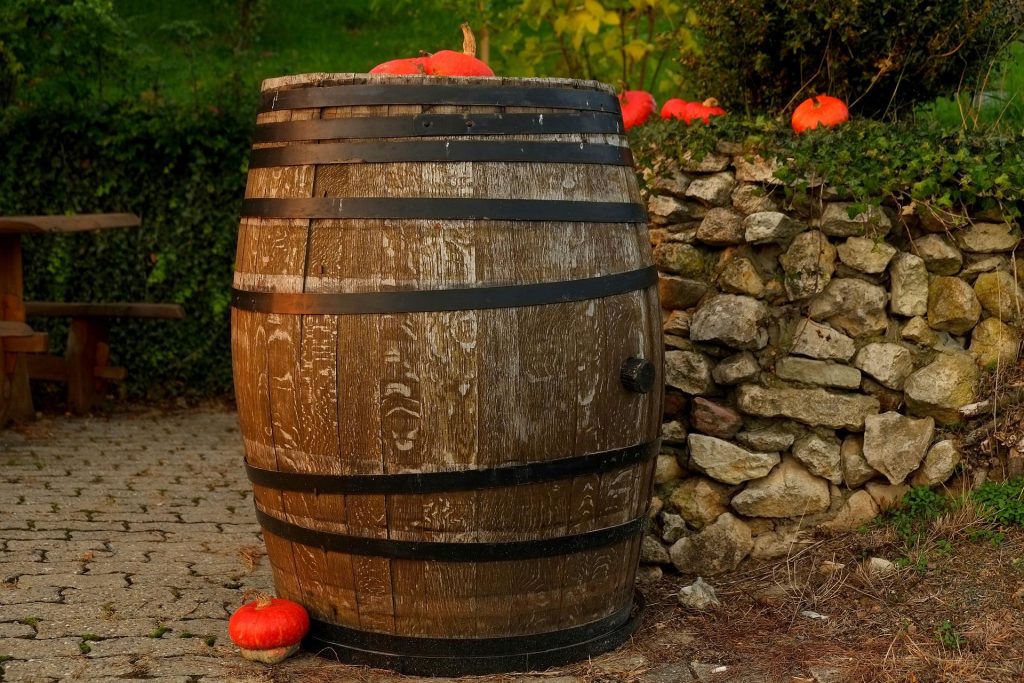
Table of Contents
How Vegetable Fermentation Works?
Fresh vegetables like peppers, carrots, garlic, and cabbage are covered in organisms like bacteria and yeast.
Fresh vegetables will go bad quickly if some of the microorganisms contribute to food spoilage.
There are many organisms on vegetables that cause food to be spoiled. Some of the yeasts and bacteria on vegetables are helpful for the production of ferments.
When you add salt or brine, control the amount of oxygen, and create a beneficial environment, the fermentation organisms can grow faster and start to outnumber the bad organisms that can spoil food.
The beneficial organisms break down the natural sugars in vegetables, creating flavor compounds, carbon dioxide gas, and various acids as they ferment.
The organisms that cause spoilage can no longer live in this acidic environment, so they die and leave only the good organisms to ferment.
It’s a great way to preserve vegetables and make them last a long time.
It creates unique and famous foods like sauerkraut, kimchi, and even hot sauce by transforming the flavor and texture of vegetables.
A wide range of health benefits can be found in Fermented vegetables, which are full of friendly organisms that improve our digestion.
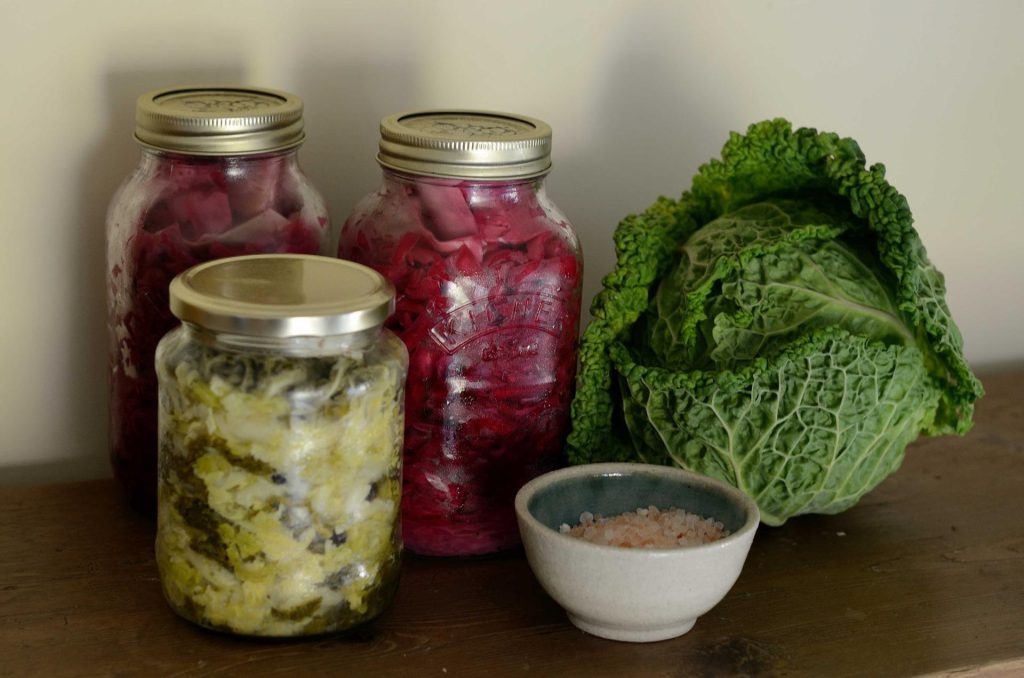
FAQs
Is It Possible To Ferment Vegetables Too Long?
If you ferment your vegetables correctly and they are in a good environment, then they can ferment for a long time.
It’s one of the best ways to preserve food without the need for refrigeration, and it lasts a long time.
The longer your vegetable ferment, the more flavor develops, so you can stop the process when the taste you prefer is reached.
If you put your vegetables in the fridge, you will be able to stop the fermentation without changing the flavor or texture.
Other factors stop the growth of yeast, such as cooking vegetables and using a mixture of vinegar and water.
What is the Best Temperature for Fermenting Vegetables?
In warm weather, organisms work more quickly, while in low temperatures, they work more slowly.
It is possible to damage the bacteria you are trying to cultivate in environments that are too hot or cold.
It is advisable to ferment at a temperature of 65- 72F.
If your temperatures are cooler, fermentation will happen more slowly, and if they are warmer, it will happen more quickly.
If you need to control the temperature, you can ferment in a cool cellar, use a warming device, or use a seedling mat to increase the temperature.
How To Identify When My Fermented Vegetables are Ready?
The three signs that your vegetables are progressing nicely are ready to eat.
- You should look for small bubbles in your container. As your food ferments, the organisms produce carbon dioxide, which looks like bubbles or foam in the liquid.
- If bubbles appear within the first day or two of the process, it’s a sign that the process is progressing correctly, but it’s not a sign that your vegetables are done.
- You have to smell your vegetables after a few days. They should not smell rotten or spoiled, but they should have a sharp, sour, stinky smell.
- The smell of your vegetables will vary depending on the type, but beware of a foul odor. Go ahead and taste your vegetables when they smell right to you.
- Depending on your preferences, you may want to let them ferment longer for more flavor development or stop them earlier when you enjoy them.
You should always be aware of the warning signs that your vegetables are ending up in the trash. The most common sign of mold is on your vegetables, but not all of it is bad.
- There will be cloudy water during the process, but it is not something to be concerned about.
- As long as the bubbles form and the vegetables don’t have an unpleasant smell, it’s just part of the process.
- A filmy grey “skin” may form over the top of your liquid during fermentation. You don’t have to worry about the mold tainting the food or the liquid because you can simply skim it off.
- If there are patches of dense, fuzzy, colorful mold, you should discard your vegetables and start over.
- You can prevent mold by using sterile materials, washing and drying your vegetables thoroughly, and making sure that your vegetables are completely submerged in the liquid, with no parts of them reaching the air.
- The vegetables should be thrown out if they smell rotten or get too soft. If you eat something that smells spoiled, don’t eat it.
- Purchase fermentable vegetables at the store to get a better idea of how they should smell.
Is It Possible For You To Ferment Vegetables Without Salt?
Salt helps the fermentation process by slowing down the activity that causes decay and giving the beneficial fermenting bacteria more time to grow.
It prolongs the life of food by helping to preserve it for longer. You can make fermentable foods without adding any salt.
It is possible to ferment at a lower temperature, which slows the process of decay and helps the process of fermentation.
Adding a starter culture like whey or the liquid from a previous batch of vegetables will promote fermentation without adding salt.
It’s possible to ferment vegetables with high levels of sodium, like kelp, dulse, or certain vegetable greens.
What Is The Taste Of Fermented Vegetables?
Depending on the vegetable and the fermentation recipe, vegetables can taste different from each other.
Two different batches of the same recipe can taste very different from one another because of the unpredictable nature of the process.
Chances are good that you have already tasted at least one of the ferments, whether it be a hot dog with sauerkraut or a vegetable with gochujang.
Conclusion
Fermenting is a fun and affordable hobby that makes delicious foods and ingredients. The majority of people discover that they can’t stop once they start.
It opens a whole new world of flavors and health benefits and is easy to use. Today is a good day to enjoy your vegetables.

Foodie and a passionate cook, I am here to share all of what I know about cooking, kitchen, and food prepping.
Follow me for delicious and healthy recipes.

